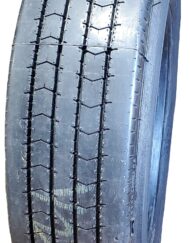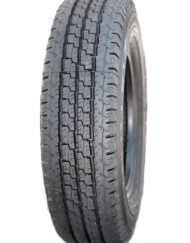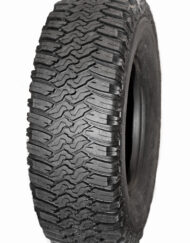That’s About the Size of It: Understanding Tire Size
What looks like a confusing series of numbers and letters is actually very understandable when it comes to tire sizes and their code. Tire Recappers can determine just the right tires for your vehicle by looking at several variables.
Here’s an explanation of how to decode a tire with the label P225/45R17 91V, illustrating the language of tire type and size. Retread tires follow the same dimensions and types.
First letters: type and size
P, the most common type of tire, refers to a metric tire, meant specifically for passenger vehicles … think cars, minivans, light-duty pickup trucks (1/4 to 1/2 ton capacity) and SUVs. If the tires are Euro-Metric, you won’t see a letter at the beginning of the size code. The sizing is the same as for P-Metric sizes but varies in load carrying and capabilities. Think European cars, SUVs and vans.
You might see other capital letters as well. An LT at the beginning of the code refers to Light Truck such as vehicles used to tow trailers or carry heavy loads. Examples include SUVs, full-size vans, medium-duty and heavy-duty pickup trucks with a 3/4 ton to 1 ton capacity.
If you see LT as a suffix and not a prefix, the vehicle is one of three light trucks. Not surprisingly, T means Temporary Spare meant for short-term use until a regular tire is replaced or repaired. ST stands for Special Trailer … tires built specifically for car, boat or utility trailers.
Euro-metric tire sizes ending with a C are commercial tires designed for delivery trucks and vans with heavy load capacity.
Cross-sectional width
When you look to the right of the service type prefix (if there is one), you’ll see three digits referring to the cross-sectional width of the tire in millimeters. This width is the measurement from the widest point of the inner sidewall to the widest point of the outer sidewall. Here that number is 225mm, equivalent to 8.86 inches.
Aspect ratio of the sidewall
Next usually comes the Aspect ratio of the sidewall, otherwise known as the tire profile measurement. It is essentially a calculation of the sidewall distance from the wheel rim to the outside of the tread … in this case 45% of the section width. The higher the aspect ratio, the taller the sidewall and the more the tire has a shape of a donut.
Tire size and wheel diameter
The next number, 17, refers to the tire and wheel diameter, indicating that the tire should be matched to a 17-inch diameter wheel. Tire rim diameters are generally calculated in inches such as 8, 10, 15, 17, 19, 20, etc. Some vehicles, like heavy-duty light trucks, box vans and heavy-duty trailers may have half inch diameters such as 14.5, 15.5, 16.5, etc. Tire Recappers offers a huge variety in tire diameter size.
Types of tire construction
If you see an R, D or B following the two-digit aspect ratio, this refers to the tire’s construction: “R” = radial construction, with internal body plies radiating outward from the center. “D” means the tire has a bias ply construction, with plies crisscrossing on a diagonal pattern. The rare “B” stands for belted tires in which the plies crisscross with a layer of reinforcing bells under the tread area.
The last letter of the tire code describes the speed rating. Z is written for sports cars but a V is included in the service description. In this case, 91 is the load index and V the speed rating.
Choosing tire size wisely
How do you choose the right tires? First of all, a tire needs to be able to carry the weight of your vehicle. Secondly, to ensure the accuracy of speed data through the car’s computer, it’s important to look at tire diameter. A good rule of thumb is to stay within a 3% diameter change (3/4 inch diameter change), though pick-ups and SUVs can often handle up to a 15% oversize tire. See Calculating Tire Dimensions for more detailed information.
You don’t want wheels to have too short a sidewall because then the car won’t turn or respond well, affecting safety. Nor do you want tires that are so heavy that they cause poor fuel milage. Diameter is critical and not a trivial measurement. The manufacturer’s original tires were chosen for a reason and it’s good not to deviate too much from their choices.
Tire Recappers of Nashville can help you choose the right tire with expert technicians and state of the art retreading technology. Thinking about purchasing a retread tire? Check out our products or give us a call at 615-832-0887 to learn more.




